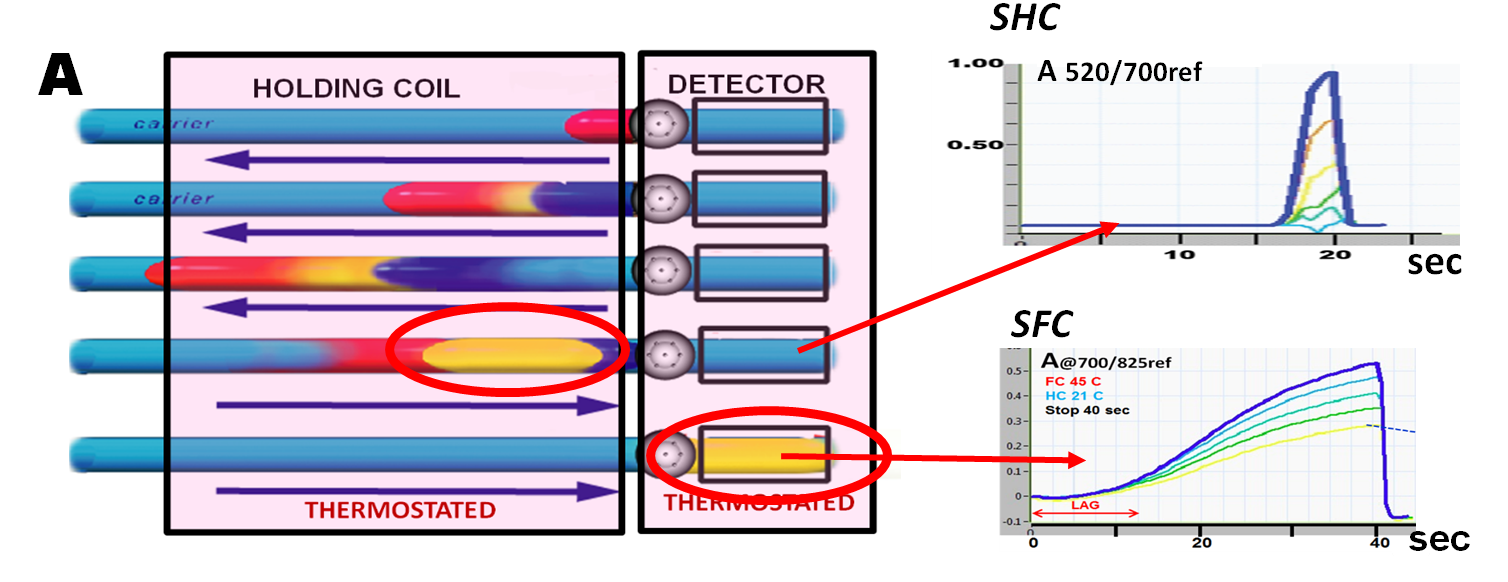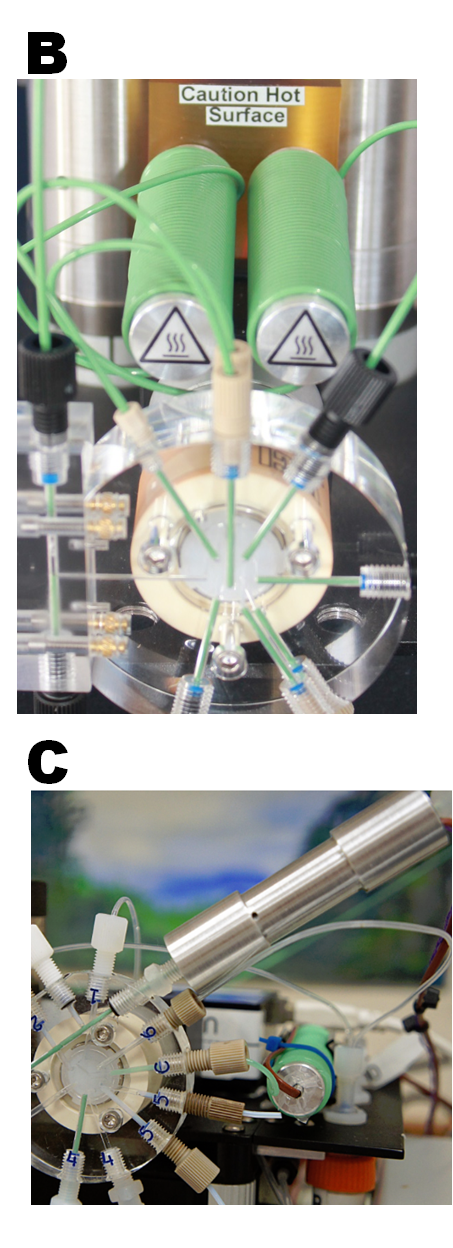Incubation Time and Temperature
2.2.7.
In Flow Injection format, the majority of reagent based assays are performed at room temperature, and almost all of them at constant continuous flowrate. This approach limits the incubation time available for chemical reactions, lowers the sensitivity of assays, and sampling frequency. This is unavoidable, because extending the length of reaction coils, with aim to increase incubation time, increases S1/2 values and broadens peaks due to extensive dispersion (2.2.6.B. Fig.A.)
In Sequential Injection format, the duration of incubation time is selected by choosing the length of stop flow period. Following an appropriate dispersion, the reaction mixture can be held in the selected part of the flow channel (A) that is either in:
- Holding coil ( SHC technique) or
- Flow cell (SFC technique)
Stopping the flow also offers opportunity to control the temperature at which the desired reactions will take place, as either holding coil(s) (B) or the flow cell (C) can be thermostated.
Note that it is neither practical nor necessary to thermostate holding coil and flow cell at the same time. This is because the goal in SHC mode is to maximize reaction yield in the holding coil and therefore heating flow cell is superfluous. The same principle applies to SFC mode, where it is desirable to obtain maximized response, while chemical reactions are being monitored, and thus heating holding coil would diminish the subsequent response in the flow cell.
Development of a new assay protocols in miniSIA format should always start by exploring reaction kinetics using in SHC format, which is easier to use then SFC mode.











